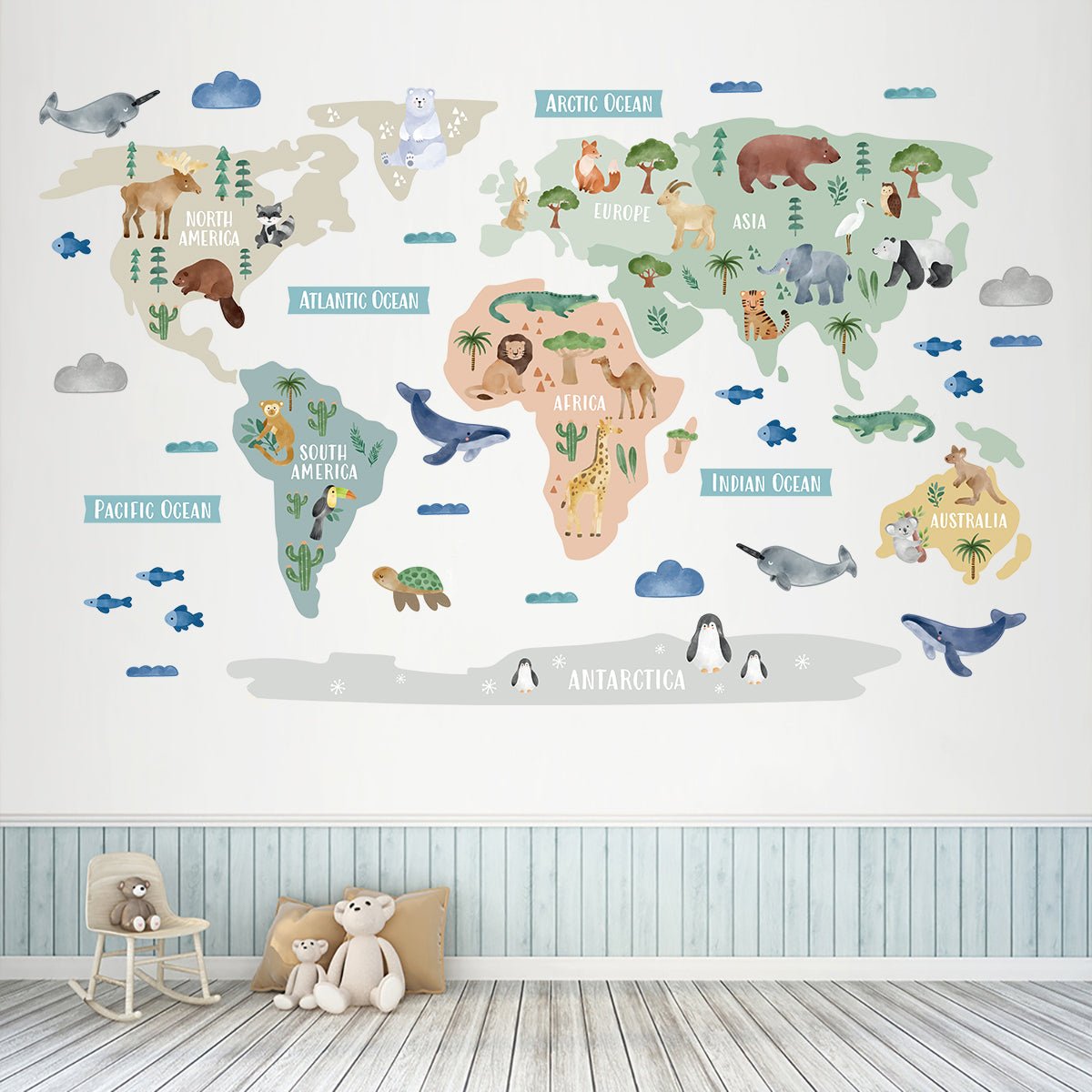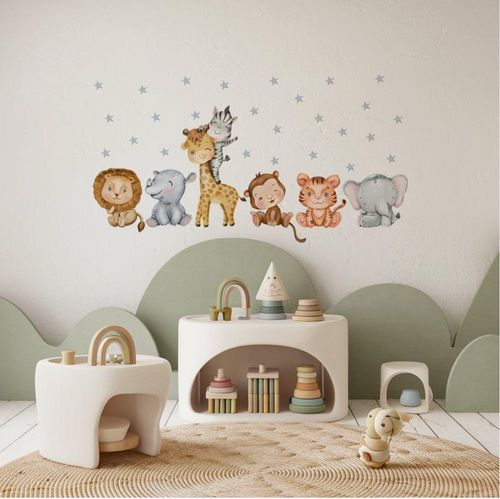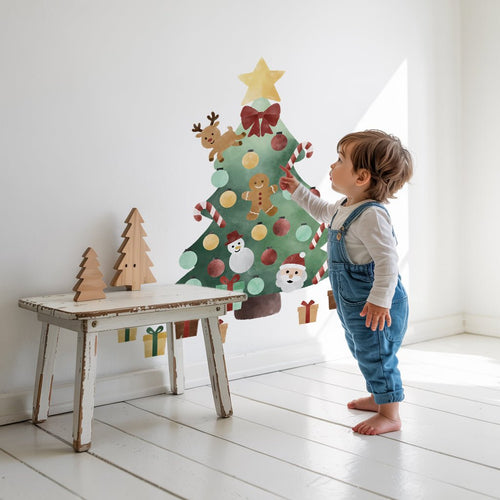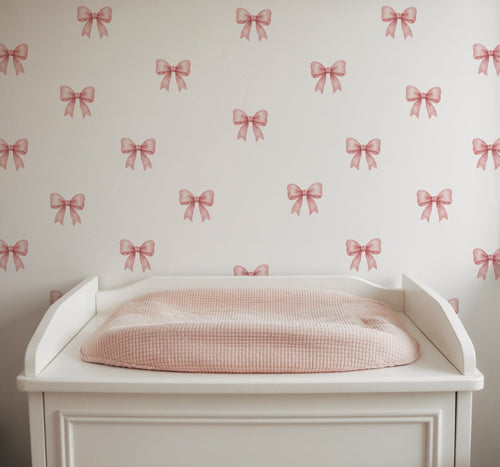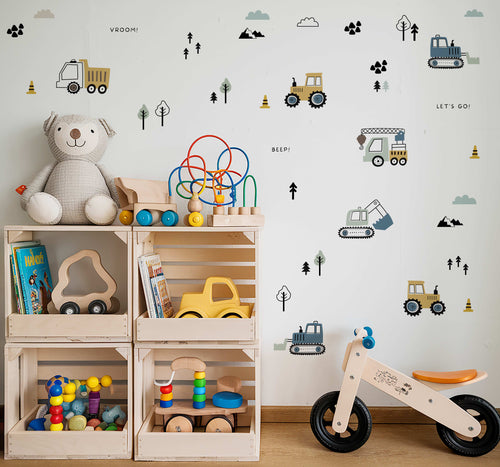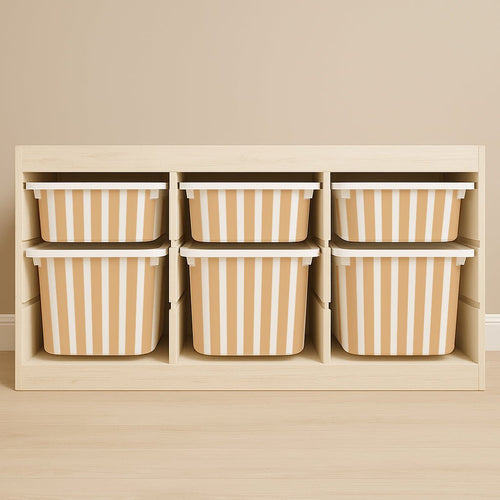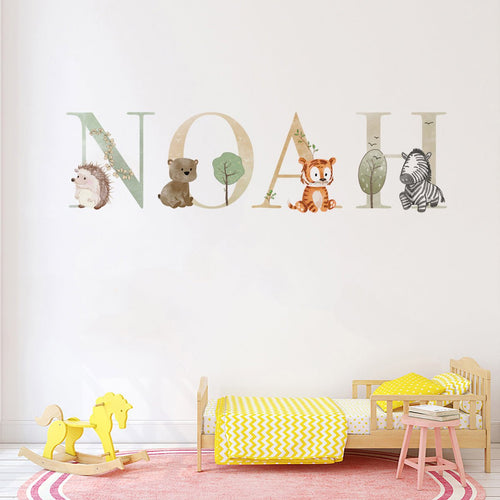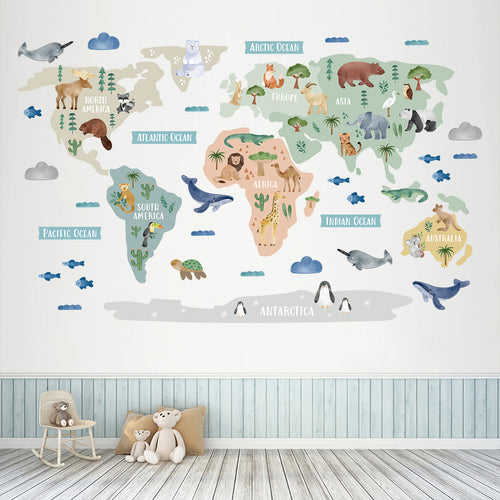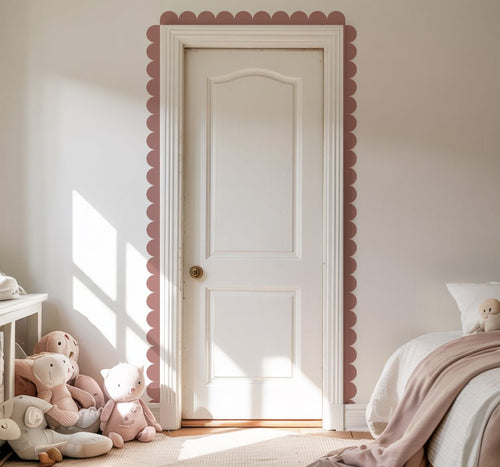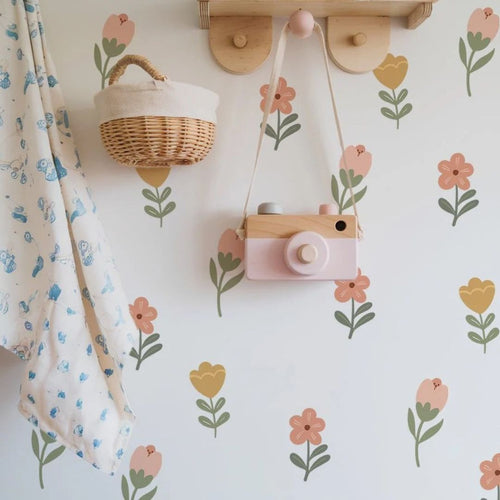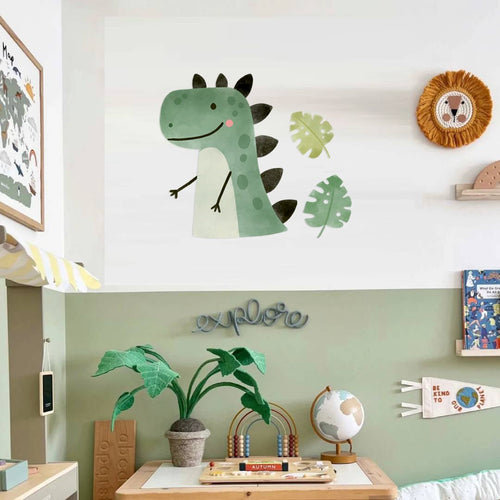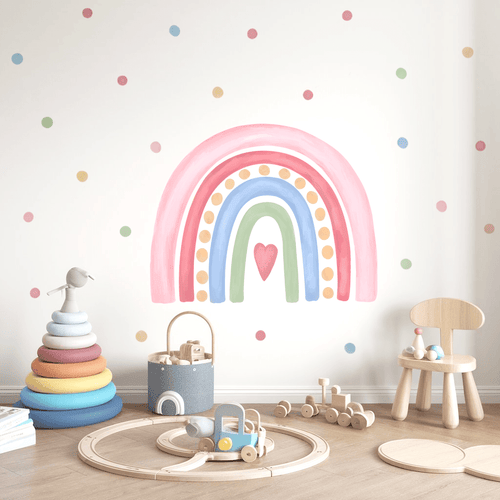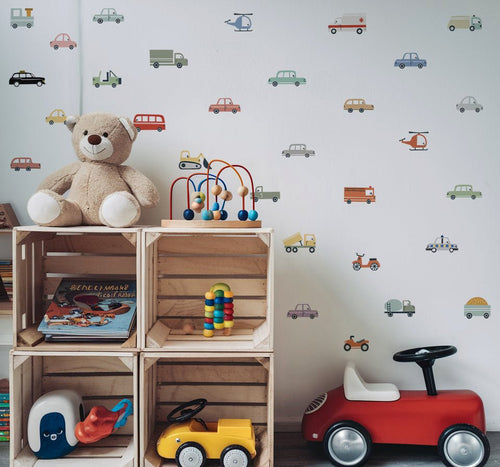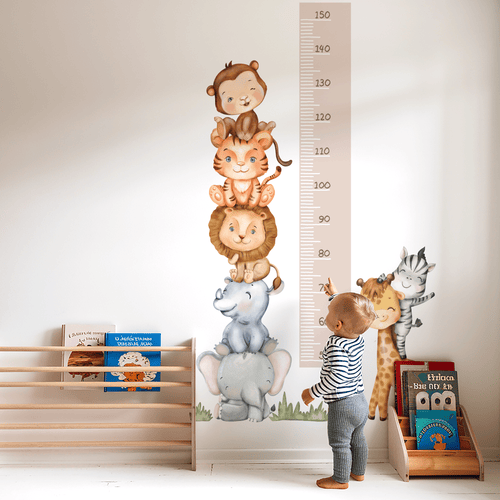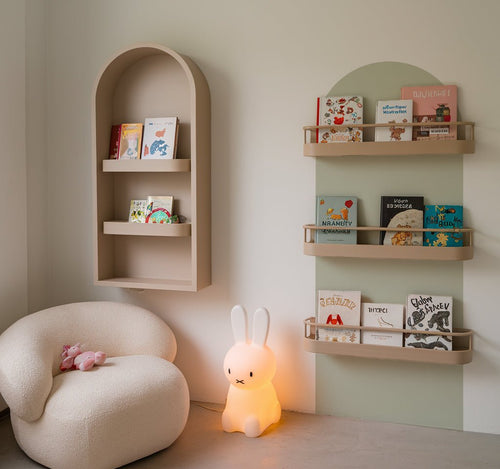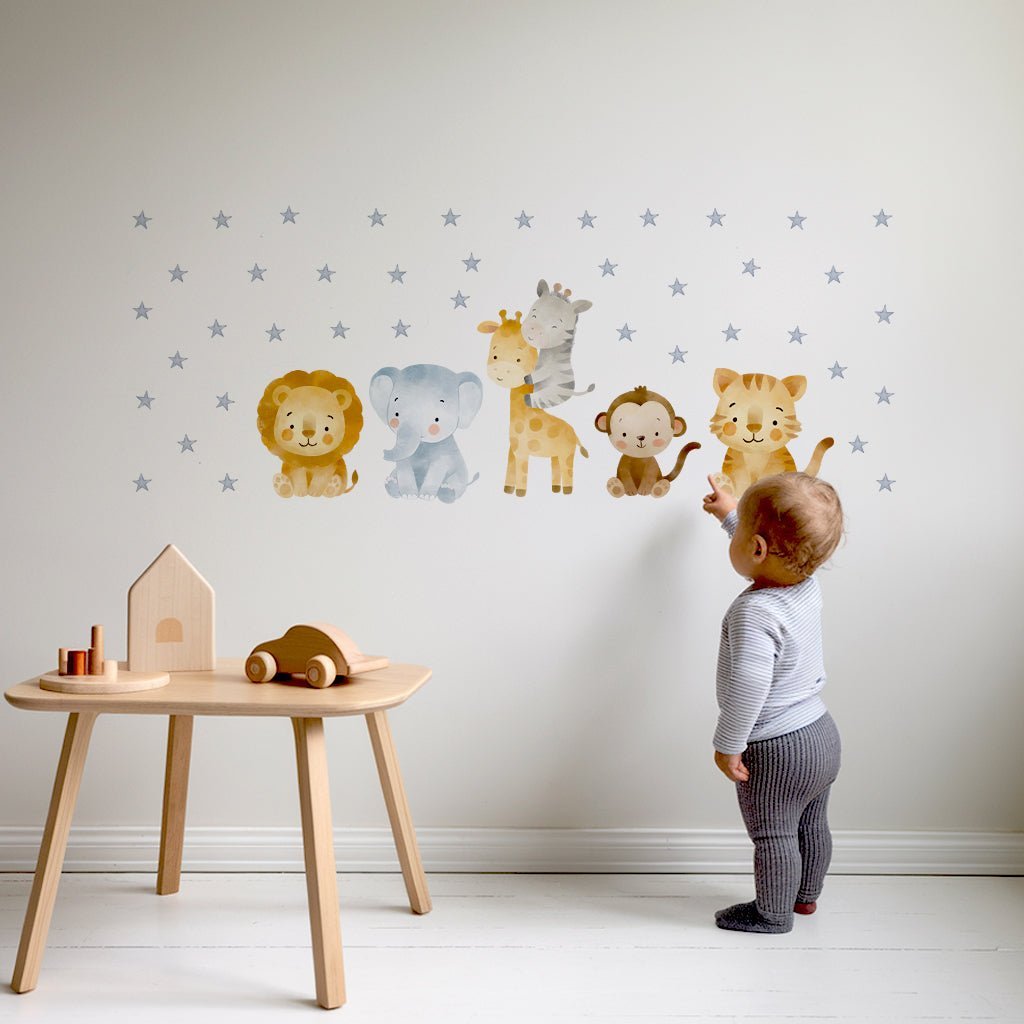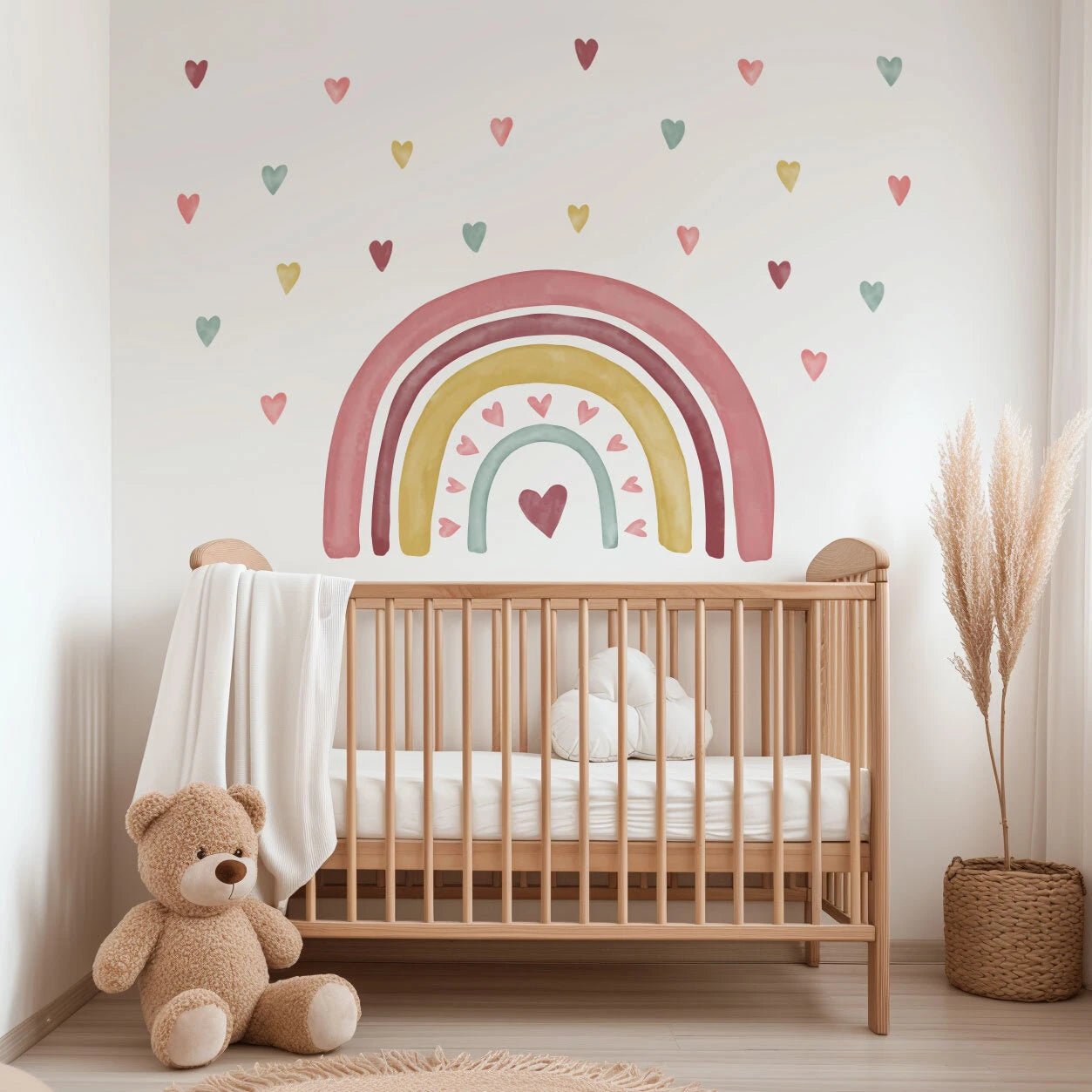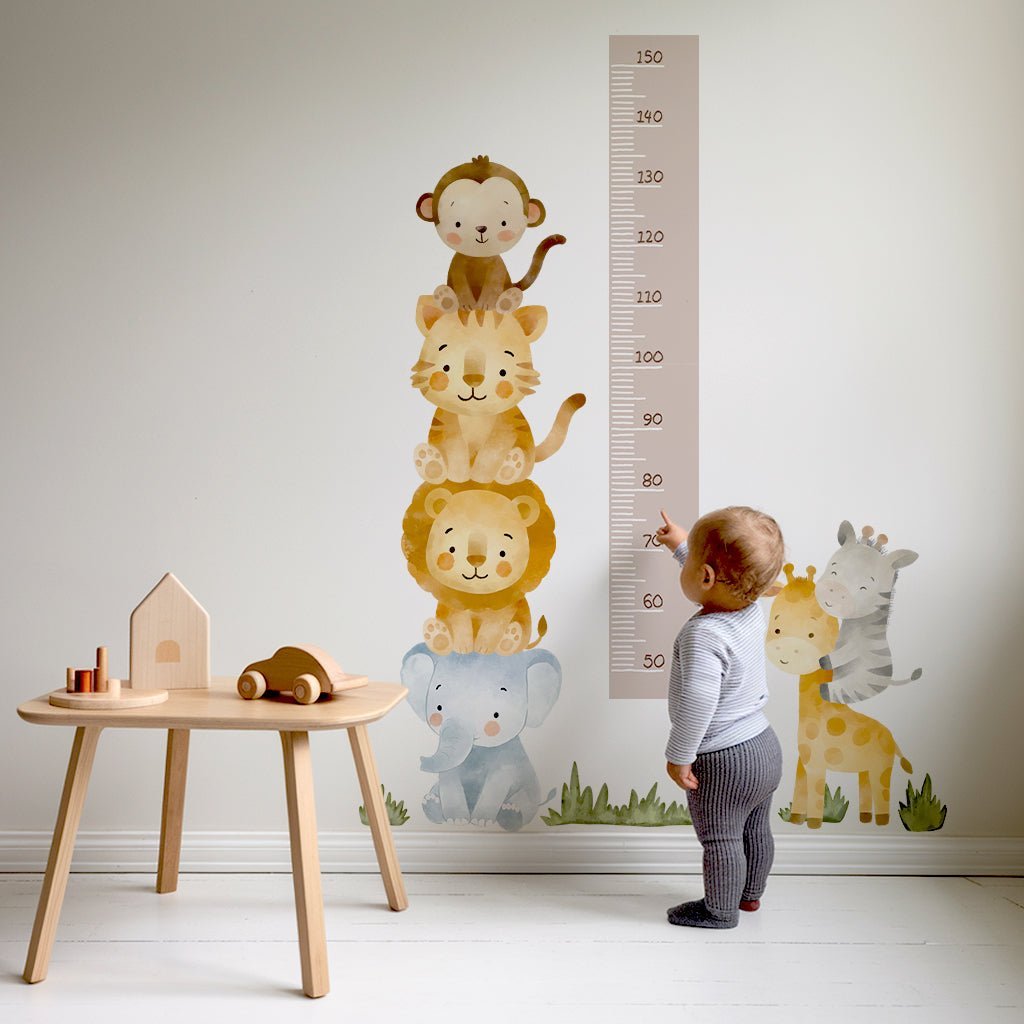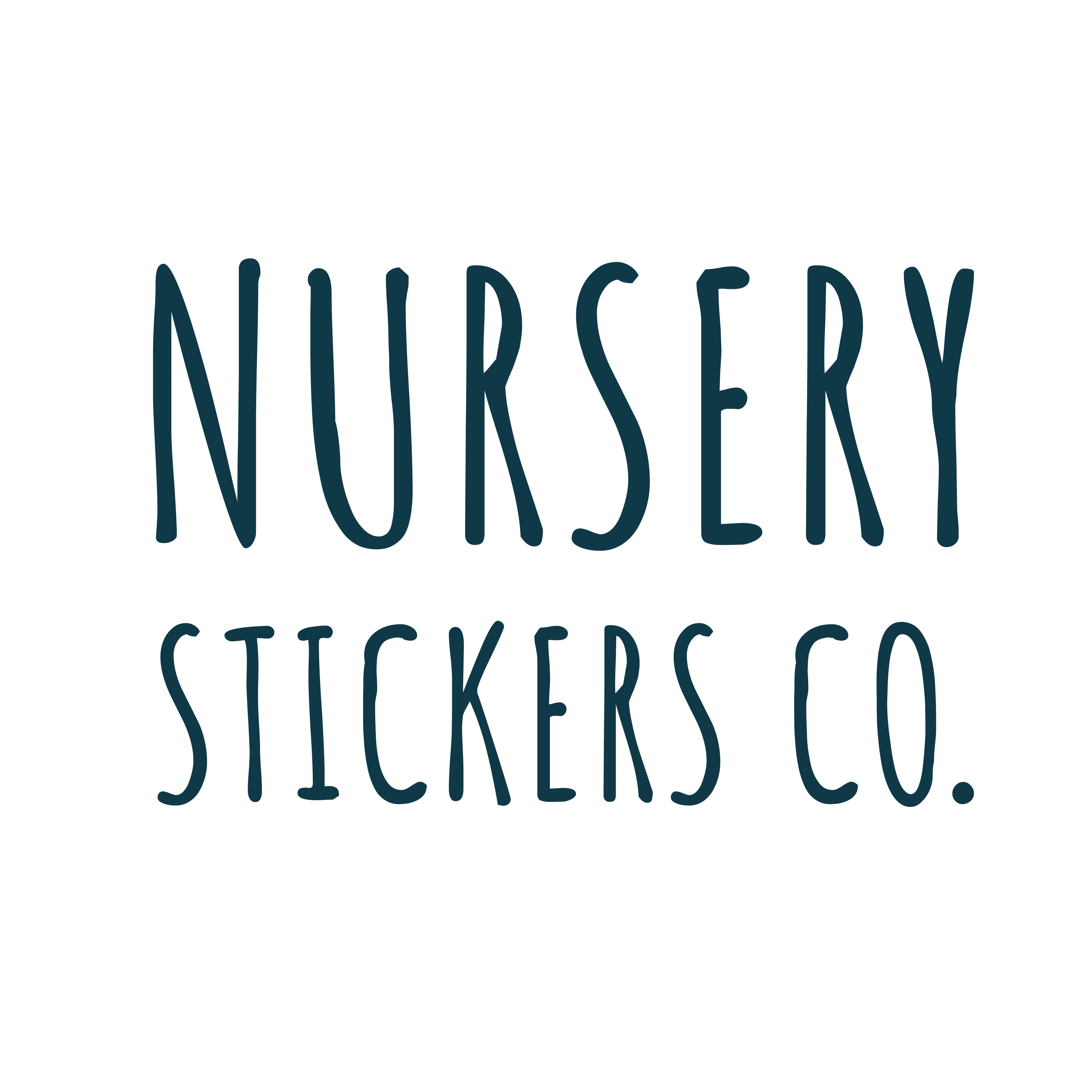Key Takeaways
- The jigsaw piece is a symbol of learning, play, and creative design for children.
- Parents often find jigsaw pieces long after completing puzzles, highlighting their lasting presence in kids' play.
- Jigsaw piece decor encourages creativity and adapts as children grow.
- Using jigsaw pieces in decor offers a fun alternative that doesn't require painting or complex crafts.
- Nursery Stickers promotes playful and imaginative designs that inspire both kids and parents.
Table of Contents
- The Joy of the Jigsaw Piece: A Parent's Guide to Puzzle Magic
- What Is a Jigsaw Piece? A Cheerful Primer
- The World of a Jigsaw Piece – Materials, Shapes, and Sizes
- Creative Jigsaw Piece Wall Art for Kids' Rooms
- Puzzle Pieces in Action: Sorting, Solving, and Displaying
- Creative Jigsaw Piece Wall Art Ideas
- DIY Puzzle Jigsaw Piece Decorations
- Comparing Puzzle Decoration Options: DIY vs. Ready-Made vs. Wall Stickers
- Giant Jigsaw Pieces as Statement Wall Features
The Joy of the Jigsaw Piece: A Parent's Guide to Puzzle Magic
If you've ever sat down with a toddler and a jigsaw puzzle (or found a rogue jigsaw piece in a toy box weeks after you thought the set was complete), you know the jigsaw piece is more than a shape, it's a tiny door to learning, play, and design. At Nursery Stickers, we love anything that sparks creativity, adapts as kids grow, and (best of all) doesn't require a paintbrush.
For parents looking to add playful, educational style to their child's space, our Children's Wall Stickers Collection and ABC Animal Friends Alphabet Wall Stickers are perfect for bringing puzzle-inspired fun to any room.
This guide celebrates the jigsaw piece, inside puzzles and beyond, with practical tips, playful examples, and ideas for bringing puzzle-piece whimsy to your child's space without the mess or permanence of traditional decorating.
What Is a Jigsaw Piece? A Cheerful Primer

Each jigsaw piece has a "tab" (the little nub that sticks out) and a "blank" (the socket where another tab fits). Edge pieces have one straight side; corner pieces have two. Whimsy pieces, think a dinosaur- or car-shaped piece in a kids' puzzle, add surprise and delight to the solving experience.
Beyond the mechanics, jigsaw pieces teach patience, spatial awareness, and problem-solving, skills that help in learning to read, write, and navigate the world. No need to memorise "interlocking mechanism" or "die-cutting", just know that tabs and blanks help pieces connect, and the type of cut affects how magical the puzzle feels.
For more inspiration on how puzzles can be personalised for your child, check out this guide on personalised jigsaw ideas.
The World of a Jigsaw Piece – Materials, Shapes, and Sizes
Materials That Matter
Cardboard pieces are most common, affordable and easy for little fingers to handle. They come in thicknesses from 1mm (flimsy, bends easily) to 2.5mm (sturdier, lasts longer). Wood offers heirloom quality, often 3mm thick, great for toddlers but pricier. Plastic pieces are rare but brilliant for bath or outdoor puzzles.
Standard Shapes and Connectors
Ribbon cuts create mostly rectangular pieces with predictable tabs, easier to sort but less visually engaging. Random cuts make each piece uniquely shaped, creating more challenge and interest. Most modern pieces interlock securely once placed, whilst older educational puzzles might just "fit" without staying together.
| Age Group | Piece Count | Piece Size (cm) | Material | Best Features |
|---|---|---|---|---|
| Toddler (2-3) | 4-12 | 3-5 | Wood/Thick Cardboard | Chunky, easy to grip |
| Preschool (3-5) | 24-60 | 2.5-4 | Cardboard | Mix of patterns, manageable |
| School Age (6+) | 100-1000 | 1.5-2 | Cardboard | Skill-building complexity |
| Family Fun | 20-100 | 5-10 | Thick Cardboard | Collaborative, floor-friendly |
Creative Jigsaw Piece Wall Art for Kids' Rooms
Nursery Stickers Puzzle Collection - Mess-Free Magic
Best for: Parents wanting jigsaw piece wall art that adapts as quickly as children's interests change
Our puzzle-themed wall stickers capture all the joy of jigsaw pieces without the frustration of lost pieces under the sofa. Printed on premium removable vinyl in the UK, they apply in minutes and remove cleanly, perfect for creating a puzzle-piece feature wall that can transform into a rainbow or safari scene next month.
The collection includes oversized puzzle piece shapes in soft pastels and bright primaries, designed to interlock visually on your wall. Unlike painted murals that cost hundreds of pounds and weeks of work, you can create a stunning puzzle-piece accent wall for under £30.
For animal lovers, our Animal & Stars Nursery Wall Stickers and Dinosaur Adventure Nursery Wall Stickers offer playful options that complement puzzle-themed decor beautifully.
Puzzle Pieces in Action: Sorting, Solving, and Displaying

The magic of a jigsaw piece begins the moment it leaves the box. Whether your child is methodically sorting edge pieces or triumphantly placing the final corner, each piece tells a story of patience and discovery. Here's how to make the most of puzzle time, and what to do when the fun doesn't stop at completion.
Smart Sorting Strategies: Teach children to group pieces by colour, pattern, or edge type before diving in. Use shallow bowls or egg cartons for sorting, it keeps pieces visible and prevents the dreaded "piece avalanche" when someone bumps the table. For larger puzzles, dedicate a puzzle mat or tray that can slide under furniture between sessions.
The Solving Process: Start with corners, build the border, then work inward by colour groups. This methodical approach builds confidence and prevents overwhelm. For reluctant puzzlers, try the "buddy system", you handle edges whilst they focus on a specific colour or character.
Beyond Completion: Transform finished puzzles into temporary wall art by mounting them on foam board, or use individual pieces from old sets for garlands and mobiles. Spray-paint damaged pieces in metallic colours for modern décor, or let children decorate them with markers for personalised room accents.
For more creative ideas to refresh your child's room, explore 10 creative ways to use nursery stickers for a magical room makeover.
Storage Solutions: Invest in puzzle roll-up mats for works-in-progress, or use large, flat storage boxes with dividers. Label each section clearly, nothing kills puzzle enthusiasm like losing half the sky pieces.
Creative Jigsaw Piece Wall Art Ideas
Individual jigsaw piece wall art transforms ordinary spaces into playful galleries. Whether you're working with pieces from damaged puzzles or creating purpose-built displays, these ideas bring puzzle magic to your walls without permanent commitment.
Painted Piece Collections: Gather 20-30 pieces from old puzzles and paint them in your child's favourite colours. Arrange them in a gradient pattern, light to dark blues for an ocean theme, or rainbow progression for pure joy. Mount on canvas or arrange directly on the wall using removable adhesive strips.
3D Puzzle Sculptures: Stack and glue pieces to create dimensional wall features. Paint them in metallic shades for sophistication, or bright primaries for playroom energy. These work particularly well in reading nooks or above toy storage.
Parent Insight
"We used pieces from my daughter's outgrown puzzles to create a 'memory wall' in her new big-girl room. Each painted piece represents a puzzle she mastered, it's like a timeline of her growing skills.", Sarah, mum of two
Mixed Media Displays: Combine puzzle pieces with family photos, children's artwork, or nature finds. The irregular shapes add visual interest and break up the predictable rectangle of standard frames. This approach works especially well in hallways or stairwells where you want movement and energy.
DIY Puzzle Jigsaw Piece Decorations
Creating your own puzzle jigsaw piece decorations lets you customise colours, themes, and sizes to match your child's current interests. These projects work beautifully for rainy afternoons or birthday party activities.
Paper Puzzle Garlands: Cut jigsaw shapes from cardstock in varying sizes. Thread them onto string or ribbon, alternating colours and orientations. These lightweight decorations work perfectly for temporary party décor or seasonal room updates. Use templates or trace around real puzzle pieces for authentic shapes.
Fabric Puzzle Cushions: For older children who enjoy sewing, create cushion covers shaped like oversized puzzle pieces. Choose soft fleece or cotton in complementary colours. When arranged on the floor, they interlock for reading time, then separate for individual seating.
Wooden Puzzle Shelving: For confident DIY parents, cut puzzle-piece shapes from plywood to create unique floating shelves. Sand smooth and paint in your chosen colours. These work particularly well for displaying small treasures, books, or plant pots in older children's rooms.
Magnetic Puzzle Boards: Cover large puzzle pieces (or puzzle-shaped cardboard) with magnetic paint, then decorative paint in your chosen colour. Mount on walls at child height for displaying artwork, photos, or important reminders. The unusual shape makes even mundane notices feel special.
For more educational wall art ideas, browse our Educational Wall Stickers Collection for designs that inspire learning and creativity.
Comparing Puzzle Decoration Options: DIY vs. Ready-Made vs. Wall Stickers

When you're ready to bring puzzle magic to your child's walls, you'll face three main approaches: crafting your own decorations, buying ready-made puzzle-themed items, or choosing removable wall stickers. Each has distinct advantages depending on your time, budget, and decorating confidence.
| Feature | DIY Projects | Ready-Made Items | Nursery Stickers Wall Decals |
|---|---|---|---|
| Time Investment | 2-6 hours per project | Shopping time only | 5 minutes application |
| Customisation | Fully customisable | Limited colour/size options | Multiple designs, colours available |
| Wall Damage Risk | Depends on materials and adhesives used | Usually minimal if using removable hooks | Zero residue, safe for rentals |
| Cost | £5-£20 (materials) | £10-£50+ | From £12-£30 |
| Mess Factor | Paint, glue, and drying time required | None | None |
| Flexibility | Can repaint or rearrange, but time-consuming | Limited | Swap out designs in minutes |
Giant Jigsaw Pieces as Statement Wall Features
Oversized jigsaw piece decorations create dramatic focal points that transform entire walls into playful canvases. These statement pieces work particularly well in playrooms, reading corners, or as headboard alternatives in children's bedrooms.
For a bold look, try our Animal World Map Nursery Wall Sticker as a centrepiece, or explore the Animal Wall Stickers Collection for more oversized, playful options.
Scale Considerations: Giant pieces work best when they're genuinely large, think 60cm or bigger per piece. Smaller "large" pieces often look awkward rather than impactful, so measure your wall and plan your layout before you buy or DIY.
For further reading on how playroom decor can impact children's development, see this CDC guide on decorating playrooms for children's mental health.
To learn more about the benefits of creative play spaces, you can also visit this overview of playrooms.
Frequently Asked Questions
How can jigsaw pieces be used creatively in children's room decor without the need for painting or complex crafts?
Jigsaw pieces can be turned into playful wall stickers, oversized wall hooks, or magnetic boards that add colour and interaction without any mess. These removable designs let you refresh a room quickly, offering a fun alternative to painting or crafting while encouraging creativity and adaptability as your child grows.
What are the different materials used for jigsaw puzzle pieces and how do they affect durability and suitability for various age groups?
Jigsaw pieces are commonly made from cardboard, wood, or plastic. Cardboard is lightweight and great for older children but less durable for toddlers. Wooden pieces are sturdy and ideal for younger kids due to their durability and safety. Plastic pieces offer a balance of durability and flexibility, often suited for a wide age range depending on thickness and finish.
What developmental benefits do children gain from playing with jigsaw puzzles and their pieces?
Playing with jigsaw puzzles helps children develop patience, spatial awareness, problem-solving skills, and hand-eye coordination. These activities also support early learning abilities like recognising shapes and patterns, which are foundational for reading, writing, and navigating their environment.
How do the shapes and cuts of jigsaw pieces influence the difficulty and engagement level of a puzzle?
The design of jigsaw pieces, such as the number of tabs and blanks, edge or corner shapes, and whimsical cut-outs, affects how challenging a puzzle is. More complex cuts increase difficulty and keep children engaged longer, while simpler shapes make puzzles approachable for younger kids, balancing fun with skill-building.
